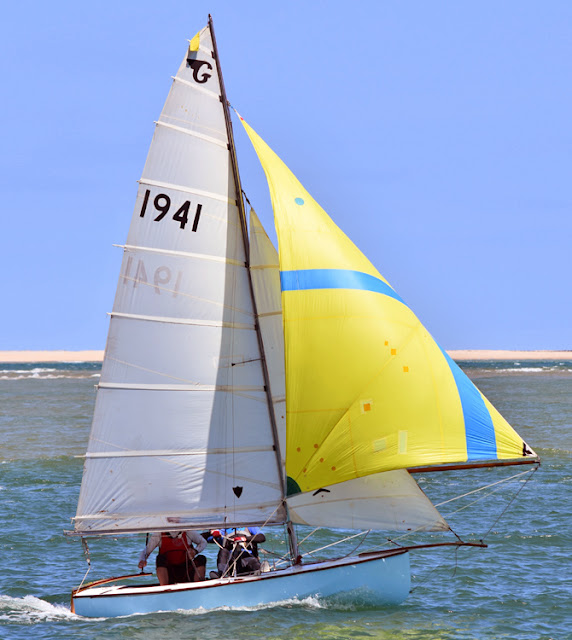While I am in the midst of covering
some of the European Moth design history, mention must also be made of the entry of a Moth type, designed by Mothists Dunand and Fragniére, in the IYRU singlehander trials of the late 1960's. (Three sets of trials, three different locations, Weymouth, England 1965; La Baule, France 1967; and Medemblik, Holland 1968, with the
eventual winner being the Contender.) She was called
Punch and it appears that she was initially designed by
B. Dunand and then the project was taken over by
Fragniére for the last set of trials.
Punch showed up at the second trials in La Baule and, with her low wetted surface, was the fastest over twenty three entrants in a light air regatta.
Looking at the sections of
Punch, as she is turned over on the beach at La Baule, it appears she wasn't an extreme-V hull but rather a semi-circular hull. (The IYRU had initially specified the sliding seat as the only permisable hiking out aid, but allowed trapezes after Elvstrom showed up at the first set of trials with his Trapez singlehander. Still most competitors stayed with the sliding seat - with the exception of the Contender.)
Yachts and Yachting, September 29, 1967
For the last set of trials at Medemblik, surprisingly,
Punch was well off the pace.
Punch was hamstrung by a very high hull weight. The IYRU had specified hull weight based on sectional shape (a sort of scantlings restriction); the wider, deeper shape of
Punch had to weigh more than the narrower, lower freeboard type such as the Contender. Three competitors, the
Unit, the
Jeton, and
Punch at the weather mark at Medemblik:
Yachts and Yachting, June 7, 1968
Hubert Raudaschl, a Finn sailor, designed
Jeton, which, in the last set of IYRU trials of 1968, took over the round hull-shape, low-wetted design mantle from
Punch and finished second to the Contender. Below is a photo of
Jeton at La Baule. She sported these weird set of folding seats that stored flush to the aft deck and individually swung out when needed. It was a feature that definitely would have needed to be changed out if she had been selected. In 1970, the Jeton hull was flattened out and re-purposed as a two man, main, jib, spinnaker dinghy.






















